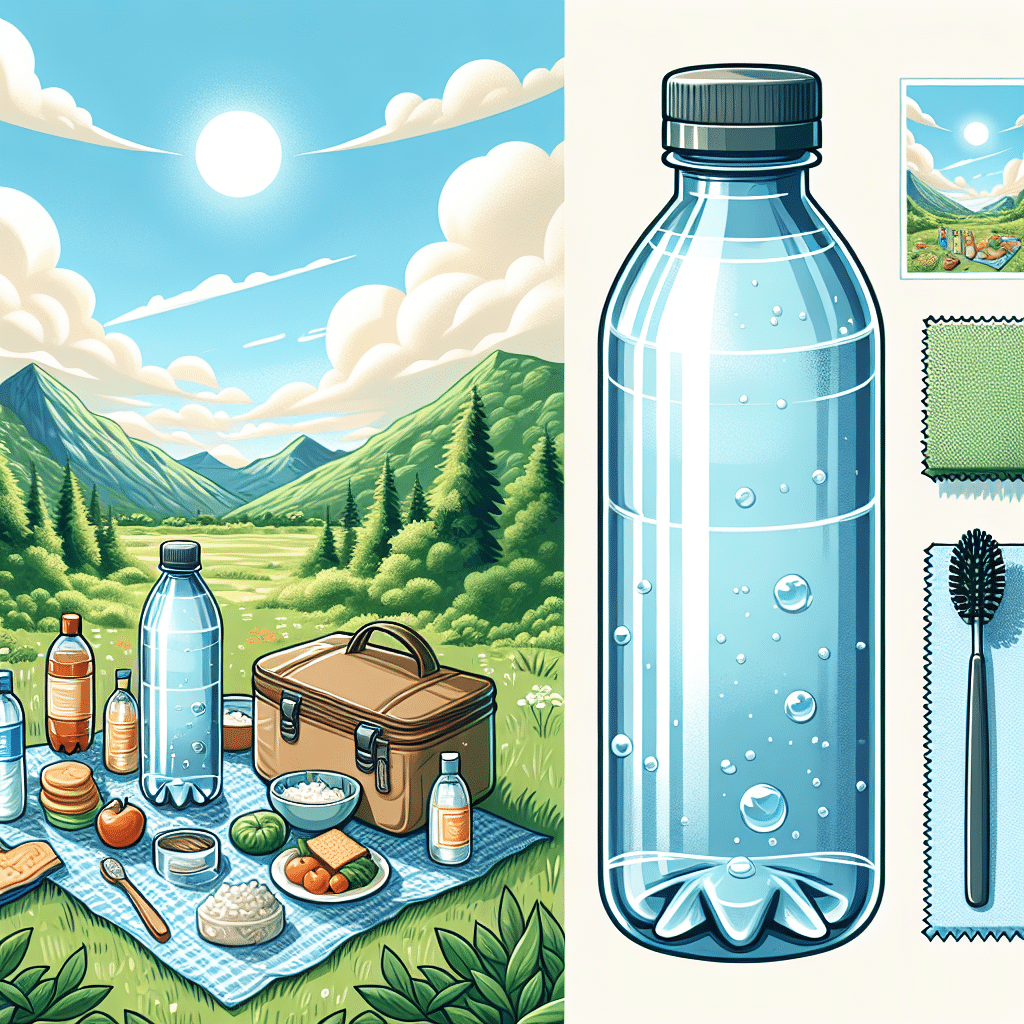Importance of Keeping Water Bottles Clean
Keeping water bottles clean during outdoor trips is essential for health and hydration. Bacteria, mold, and other contaminants can build up, especially when bottles are used in environments like hiking trails, camping sites, or mountain biking paths. Regular cleaning not only ensures safe drinking water but also prolongs the life of the bottle itself.
Choosing the Right Bottle
Opt for bottles made from materials that are easy to clean and resistant to bacterial growth, such as stainless steel or BPA-free plastic. Avoid opaque bottles that can harbor unseen bacteria. Clear bottles allow you to monitor cleanliness visually.
Safety and Hygiene Practices
-
Rinse Before Use: Always rinse your water bottle with clean water when you arrive at your outdoor destination. This initial rinse will eliminate any contaminants picked up during transport.
-
Avoid Drinking from the Bottle Directly: When hiking or outdoor adventuring, drink from your water bottle using a clean cup instead of sipping directly from it. This reduces saliva transfer, keeping the interior of the bottle cleaner.
-
Carry a Dedicated Cleaning Kit: Include a small cleaning kit in your gear. This should consist of biodegradable soap, a soft-bristled brush, and a microfiber cloth. Ensure the soap is gentle enough to use in natural water sources if necessary.
Regular Cleaning Practices
-
Daily Cleaning: If you’re camping for several days, clean your bottle daily. Use a soft brush to scrub the inside and a combination of warm water and biodegradable soap to wash it out thoroughly.
-
Natural Cleaning Agents: If soap isn’t an option, use baking soda or white vinegar as natural cleaning agents. Fill the bottle with warm water, add one tablespoon of baking soda or vinegar, shake, and let it sit for an hour before rinsing.
-
Remove Odors: If any odors persist, leave the cap off and let the bottle air out. You can also try filling the bottle with a mixture of vinegar and water and leaving it overnight.
Deep Cleaning Techniques
-
Dishwasher Method: If the bottle is dishwasher-safe, run it through a warm wash cycle at home or at a campsite with a suitable facility. This will sanitize the bottle more effectively than hand washing.
-
Soak Method: For stubborn stains or odors, soak the bottle overnight in a mixture of warm water and denture tablet or a specialized bottle cleaner. These products are designed to eliminate bacteria and odors.
-
Sterilization Options: Use ultraviolet (UV) light sanitizers specifically designed for water bottles. These devices can kill 99.9% of germs using UV-C light in just a few minutes.
Preventative Measures
-
Choose the Right Lid: Opt for bottles that come with a one-piece lid instead of a screw-on type, which can be harder to clean. Also, consider bottles with wide mouths for easier access during cleaning.
-
Use Filters: Consider using a portable water filter. They reduce bacteria and also prevent contaminants from entering your bottle. Always ensure the filter is clean as well.
-
Limit Fill Options: Fill your bottle with treated or boiled water when possible. If the water source is questionable, then it’s essential to ensure that the bottle and any filters used are clean.
Keeping Your Bottle Dry
-
Drying Technique: Moist environments are conducive to bacterial growth. After cleaning, always allow the bottle to dry completely before storing it. This can be done by placing it upside down on a drying rack or kitchen towel.
-
Remove the Lid: Keep the lid off to enable airflow and drying ability. Leaving the lid on traps moisture, which can lead to mold development.
-
Store Properly: When not in use, store water bottles in a well-ventilated area. Consider using silica gel packs in your gear bag to absorb excess moisture.
Frequent Checks and Maintenance
-
Visual Inspection: Before, during, and after trips, regularly check the bottle for signs of mold, slime or unusual odors. Take immediate action if any issue is spotted.
-
Replacement Schedule: Set a timeline to replace your water bottles, especially if you notice persistent odors or stains that cleaning cannot fix.
-
Sharing Protocols: If sharing your water bottle with others on a trip, clean the bottle thoroughly before and after each use, and encourage the same practice from your companions.
Environmentally Friendly Options
-
Eco-Friendly Cleaners: As outdoor enthusiasts, choose biodegradable and non-toxic cleaning supplies that won’t harm the environment. Even natural methods like baking soda and vinegar are safe and effective.
-
Reusable Alternatives: Promote using reusable bottles instead of single-use plastics. Encourage fellow travelers to bring their own bottles, fostering a culture of conservation.
-
Waste Management: Always dispose of any cleaning supplies responsibly. Bring back any used cloths, wipes, or containers to keep natural spaces clean.
Educational Resources
Familiarizing yourself with educational resources can enhance your outdoor experience. Many websites offer guidance on best practices for maintaining hygiene in outdoor activities. Books on outdoor skills, first aid, and survival tips can also provide insights into keeping yourself healthy, including proper hydration techniques.
Implementing these strategies will ensure that you share clean water responsibly while enjoying nature. Staying hydrated is crucial, and clean bottles will keep you refreshed on your next adventure.
